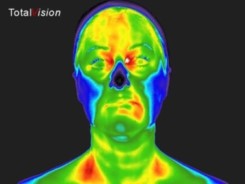A root canal is a dental operation which removes the pulp of a tooth. The resulting cavity is disinfected and then filled. Dental pulp is necessary to nourish and hydrate tooth structure, and to provide hot and cold feelings in teeth. By severing the nerve connection, the dentist ensures there is no more pain, and then seals off the healthy blood supply to the area. As a result, with a root canal, two of the most important components of wellness are removed: pain receptors and blood supply.
When a tooth is abscessed, the nerve in it has died and the pus resulting from that is pushed out into surrounding bone. The current standards of dental practice are to save a tooth at any cost, an approach that underestimates the negative health impacts of leaving a dead, bacteria-filled tooth inside the body. No other dead decaying organ or foreign object would ever be left inside the human body. In many cases the root canal treatment is either incomplete, not thoroughly sterilized, or not properly filled with a material that seals all the tubules properly. As a result, the tooth may remain infected and become very toxic.
Pain acts as a warning system that something is wrong. When a patient has no symptoms of pain or discomfort, the assumption is that all is well. As the root canal operation does not remove all bacteria originally present in the tooth, the risk of infection increases. At the same time, the removal of the pain receptors means that the patient only becomes aware of a potential problem if an abscess appears, by which time, the infection has already been setting in for ages and may have already spread to other parts of the body.
People living with a chronic source of infection and inflammation will eventually find that their immunity is affected. In some cases, this chronic inflammation and infection will actually promote the growth of malignancy. The natural defense mechanism to fight malignant cells is impaired since the immune system is busy dealing with inflammation that has no chance of resolving on its own. The only way to resolve this problem is by identifying and removing the cause. The infected area has to be properly dealt with before the body can be restored to health.
Imagine The Following:
You have a thorn lodged under your finger nail and it gets infected. Without taking out the thorn you mummify the thumb. Eventually the toxins would build up and affect the rest of your body. It wouldn’t make sense to keep the mummified thumb, rather the thorn should be removed so the infection could heal. The root canal treated tooth is the mummified thumb with a thorn under the nail.
Consider The Following:
When thermography is used appropriately in clinical practice, it can serve as an early warning assessment tool. When women come in for breast thermography and there are significant findings observed in their breasts I often suggest additional cranial thermography. In one case, a woman presented with significant findings in her right breast and an increase in thermal activity in the supra clavicular region. The cranial thermography exam indicated significant perioral hyperthermia on the right side. This finding correlated to a previous root canal. I suggested she consult with a holistic dentist to investigate the health of the tooth but she chose the “wait and see” approach. Six month later, her follow-up thermography scan presented with increased findings and persistent perioral hyperthermia.
This woman never followed up with her dentist and tried to treat herself with natural anti-inflammatory products. However, bacterial issues related to the teeth can’t be treated with anti-inflammatories. In order for the body to heal, removal of the CAUSE of the inflammation is a must. Similar to having a splinter in your hand, all sorts of substances can be taken to reduce the swelling and inflammation produced by the foreign body in the hand, but these remedies will not work until after the splinter is removed. Only then does the swelling and inflammation become reduced.
Finally, she agreed to visit her dentist and had the tooth extracted after which she followed an anti-bacterial herbal protocol along with liver and lymphatic drainage support. She came back for a follow-up thermography six months after the procedure and all of the significant thermal markers in her breast had subsided.
Despite multiple research studies linking root-canal treated teeth to cancer and other chronic disease, the majority of people, even health care professionals, do not pay enough attention to dental health. Remember that, in the body, the mouth is the largest cavity that is continuously exposed to outside influences and the environment. This makes the mouth a significant source of potential infections which must be dealt with at source to eliminate the negative health consequences. When using thermography in clinical practice, consider cranial and breast imaging as part of a comprehensive assessment of health.
Healthier is Smarter!
Sharon Edwards – BA, R(Hom), DNM, RNCP, CTT

